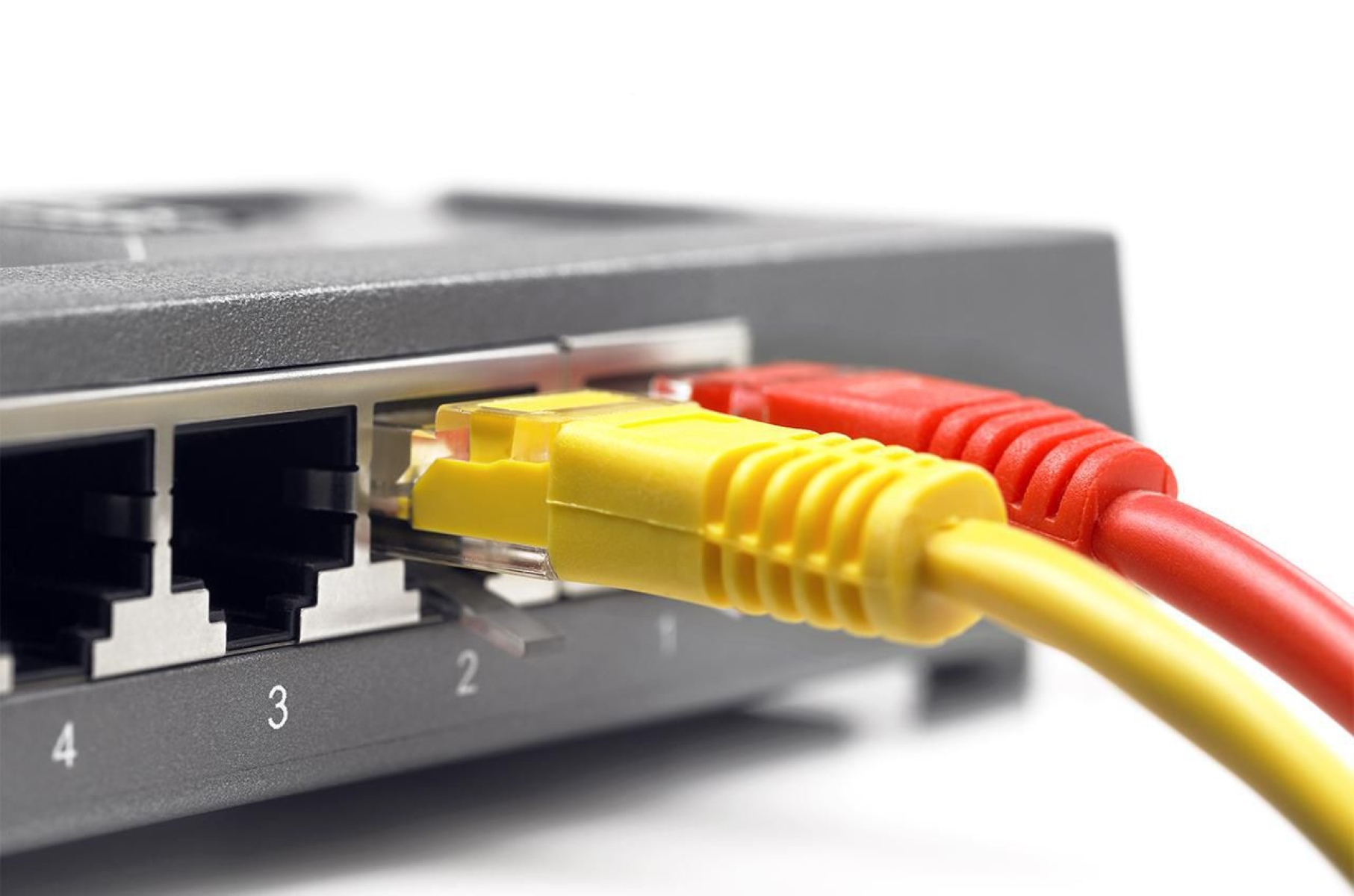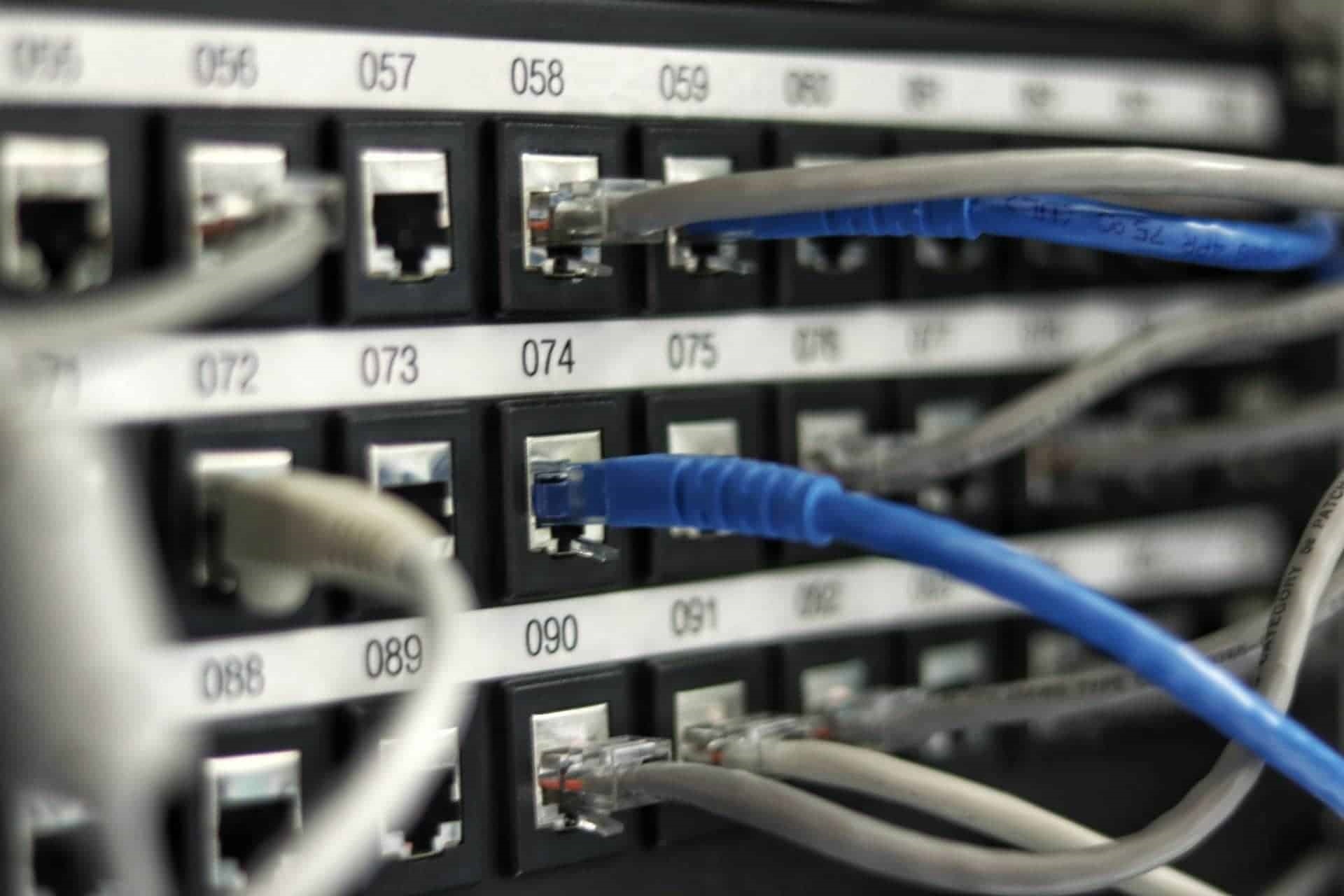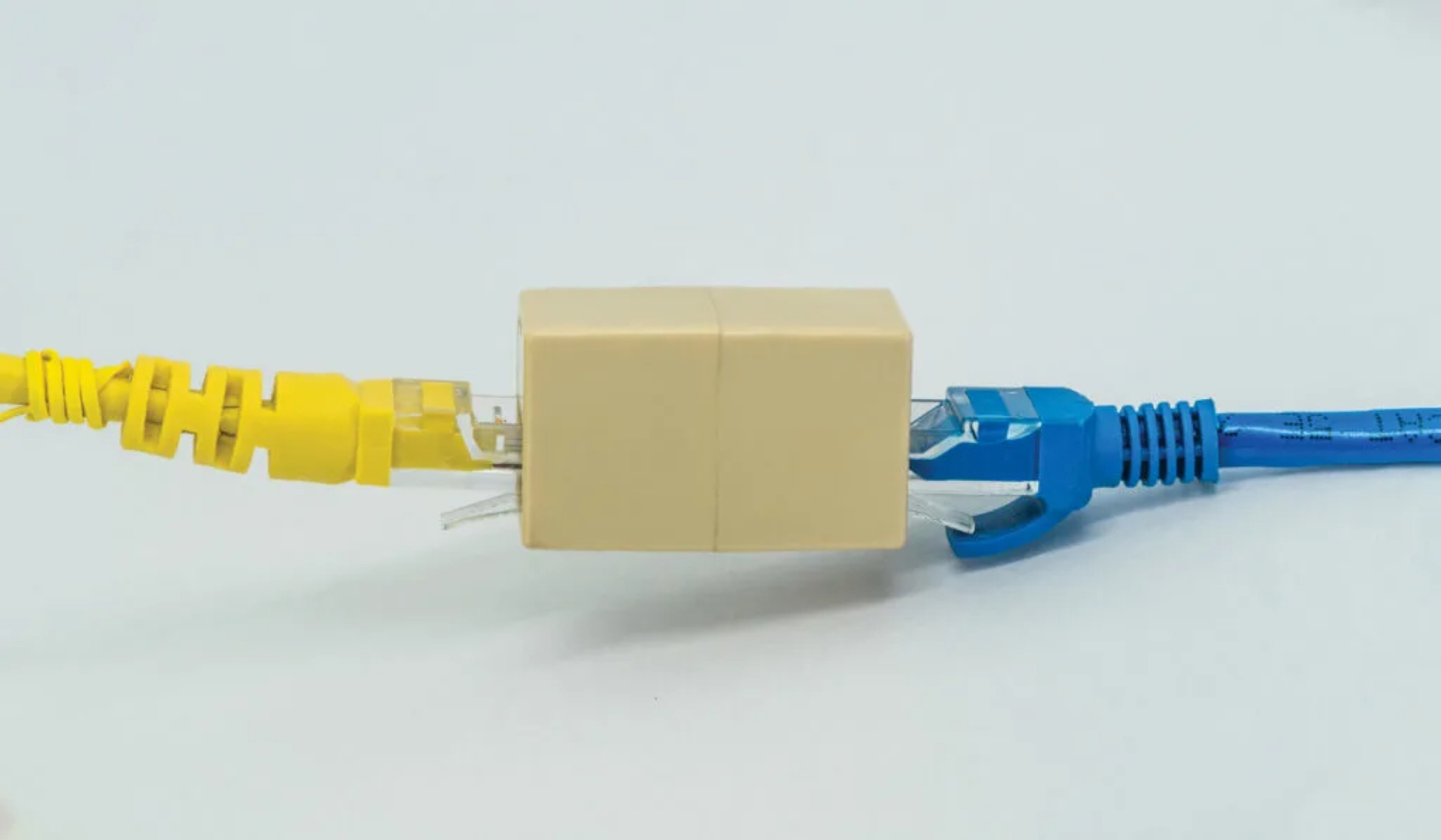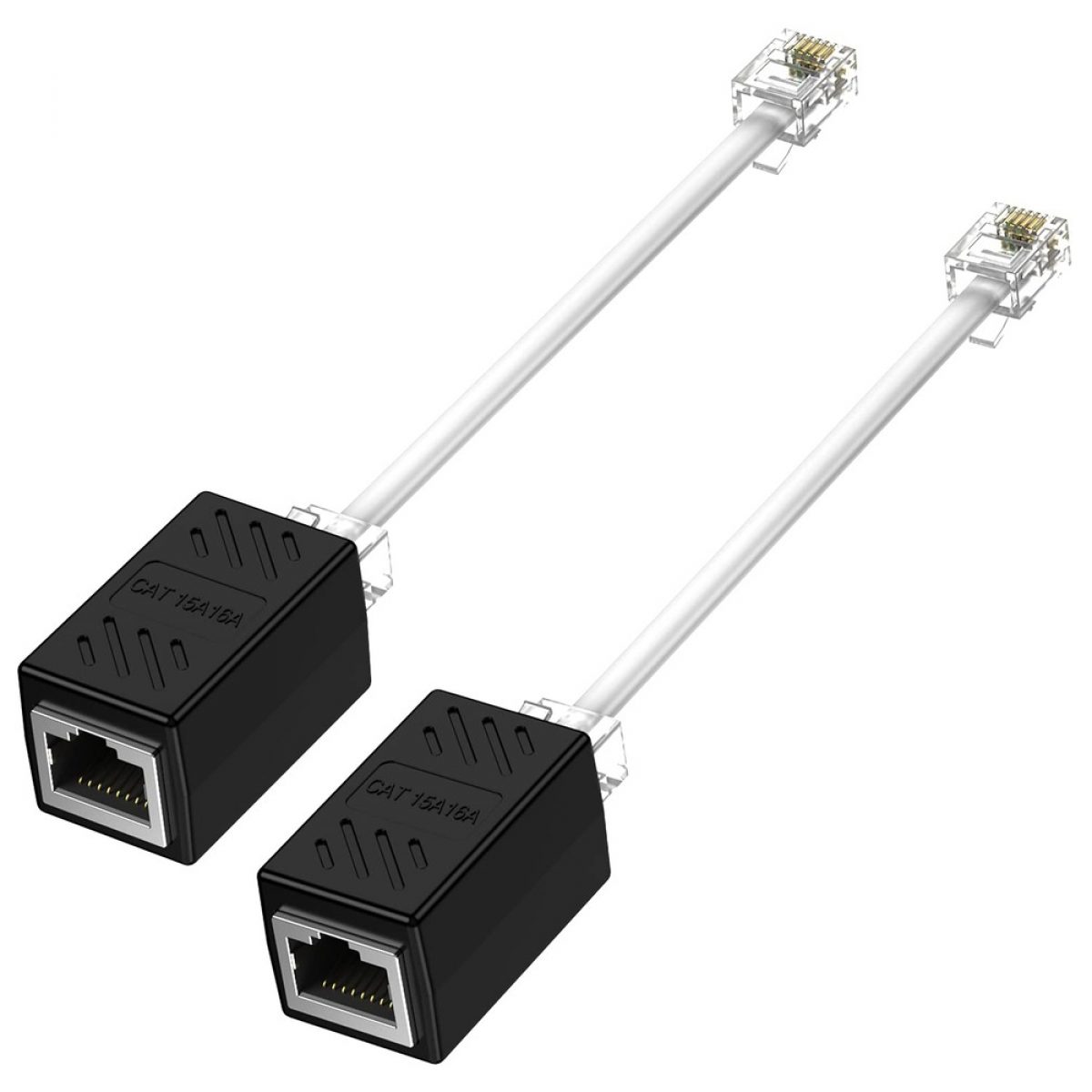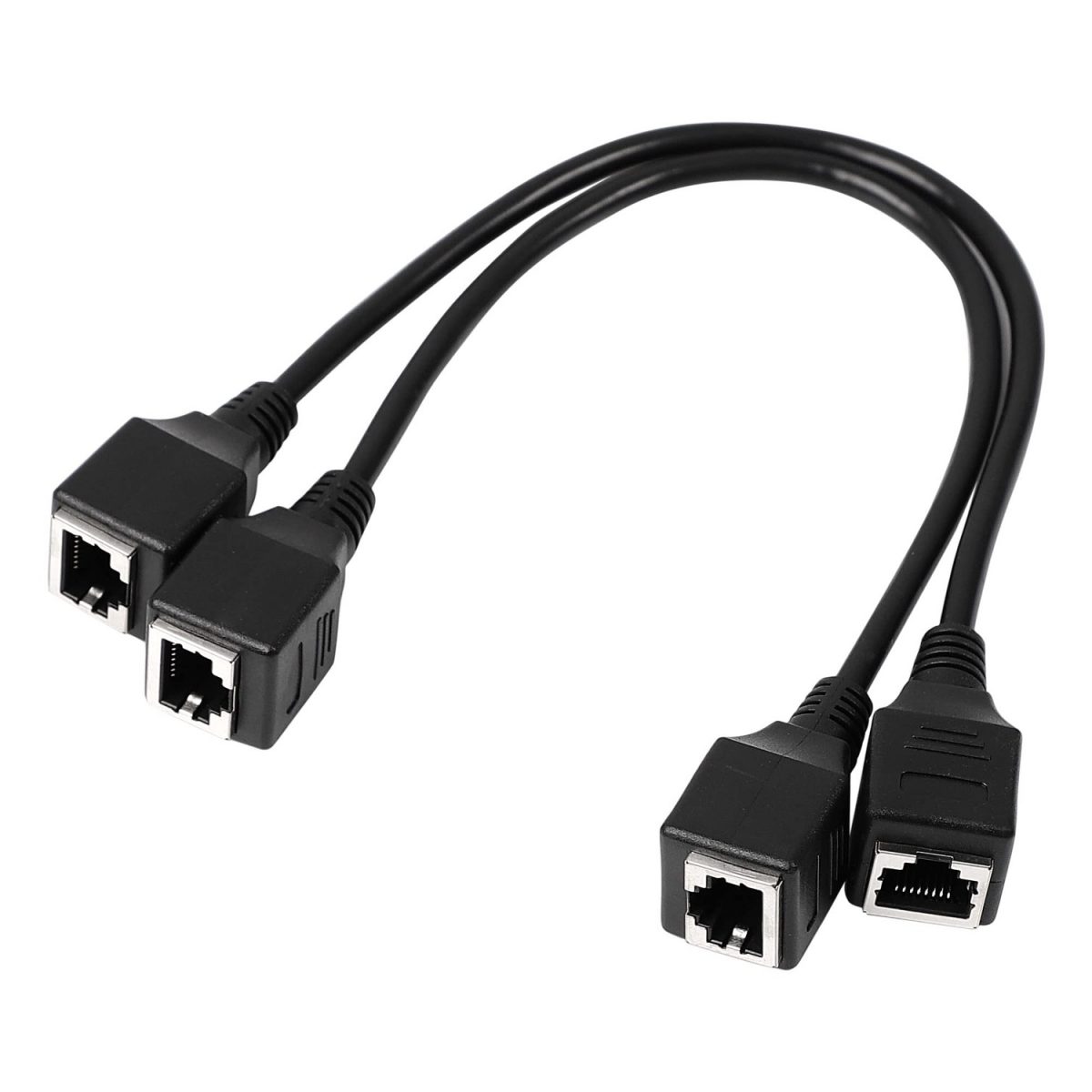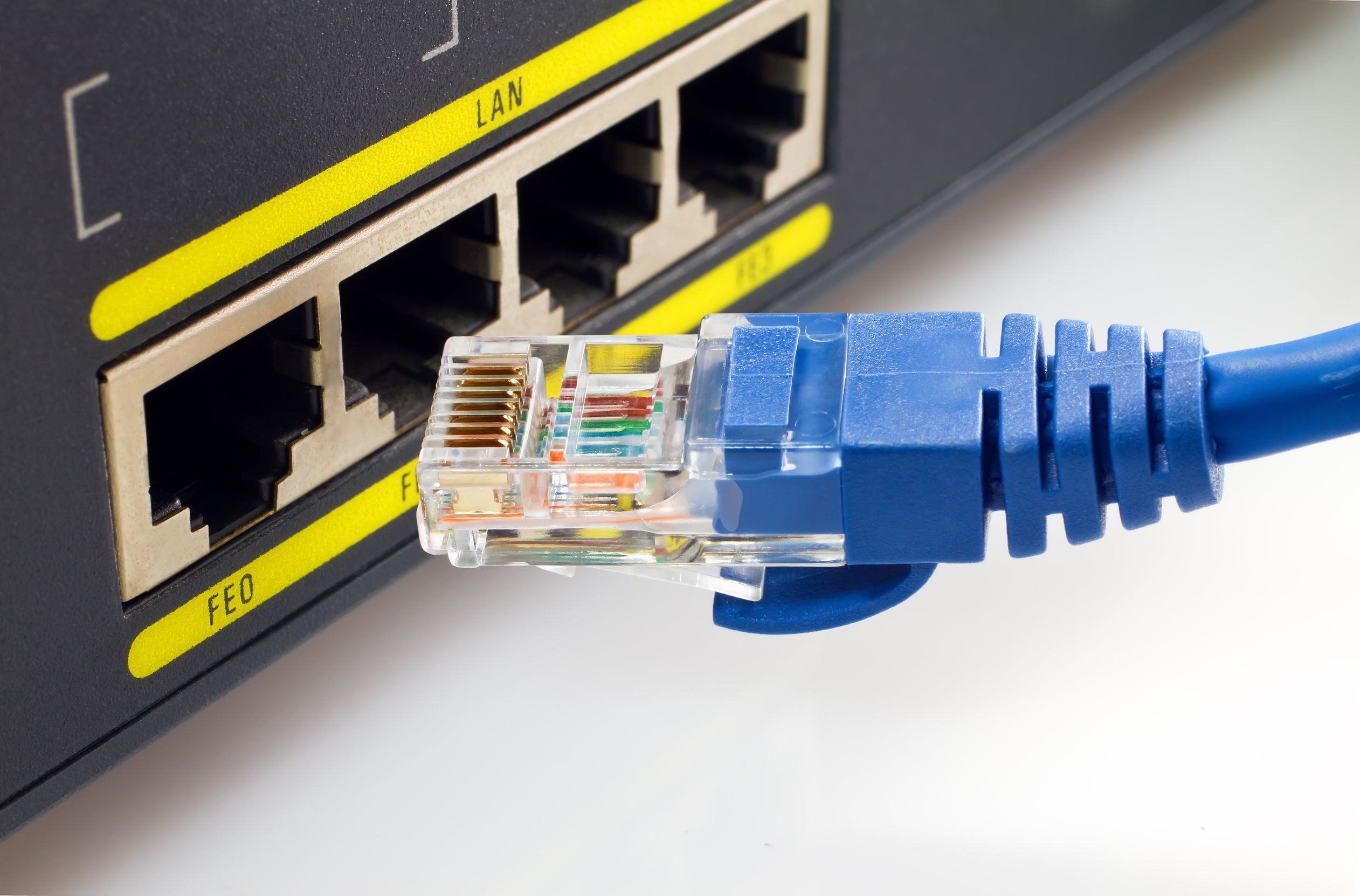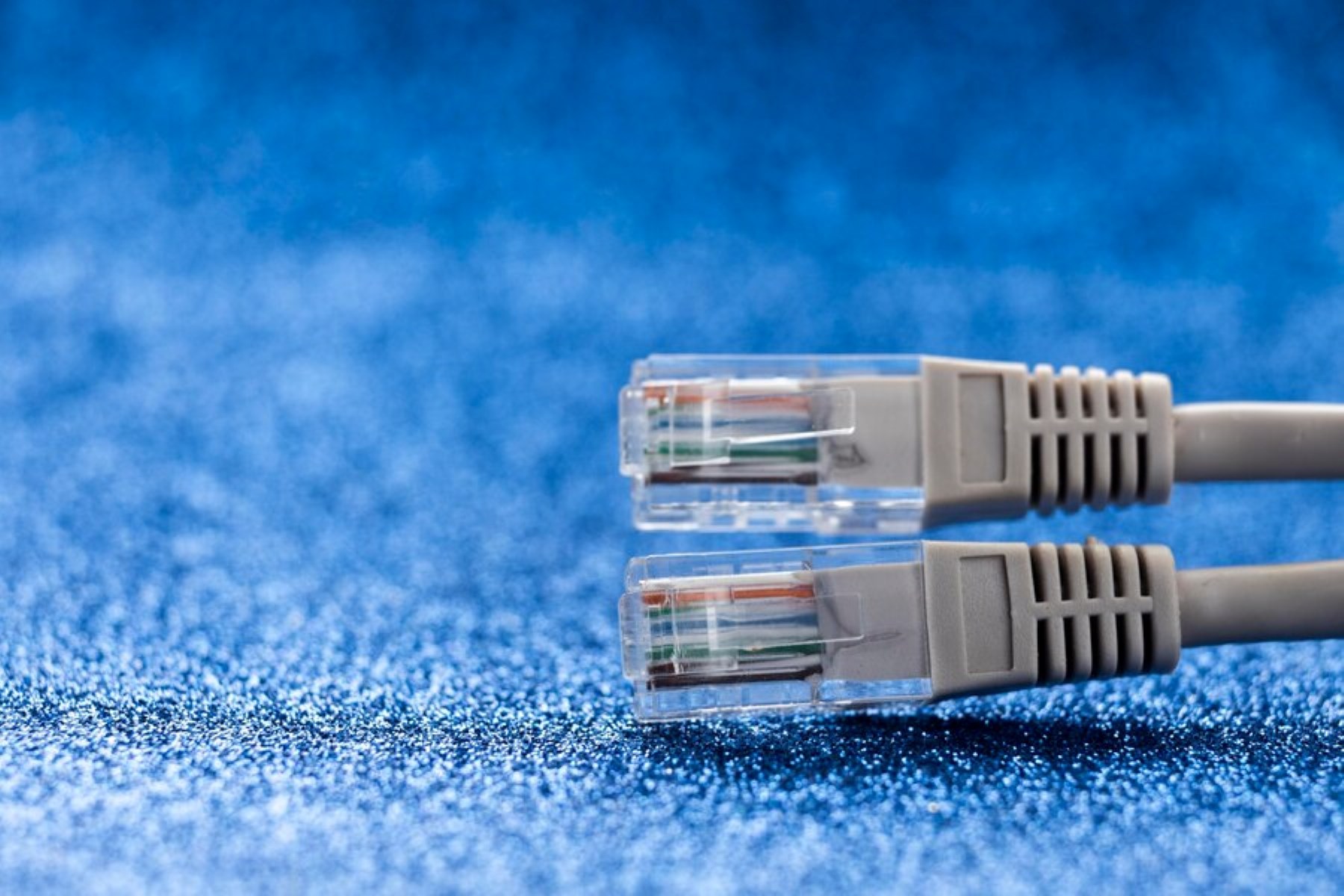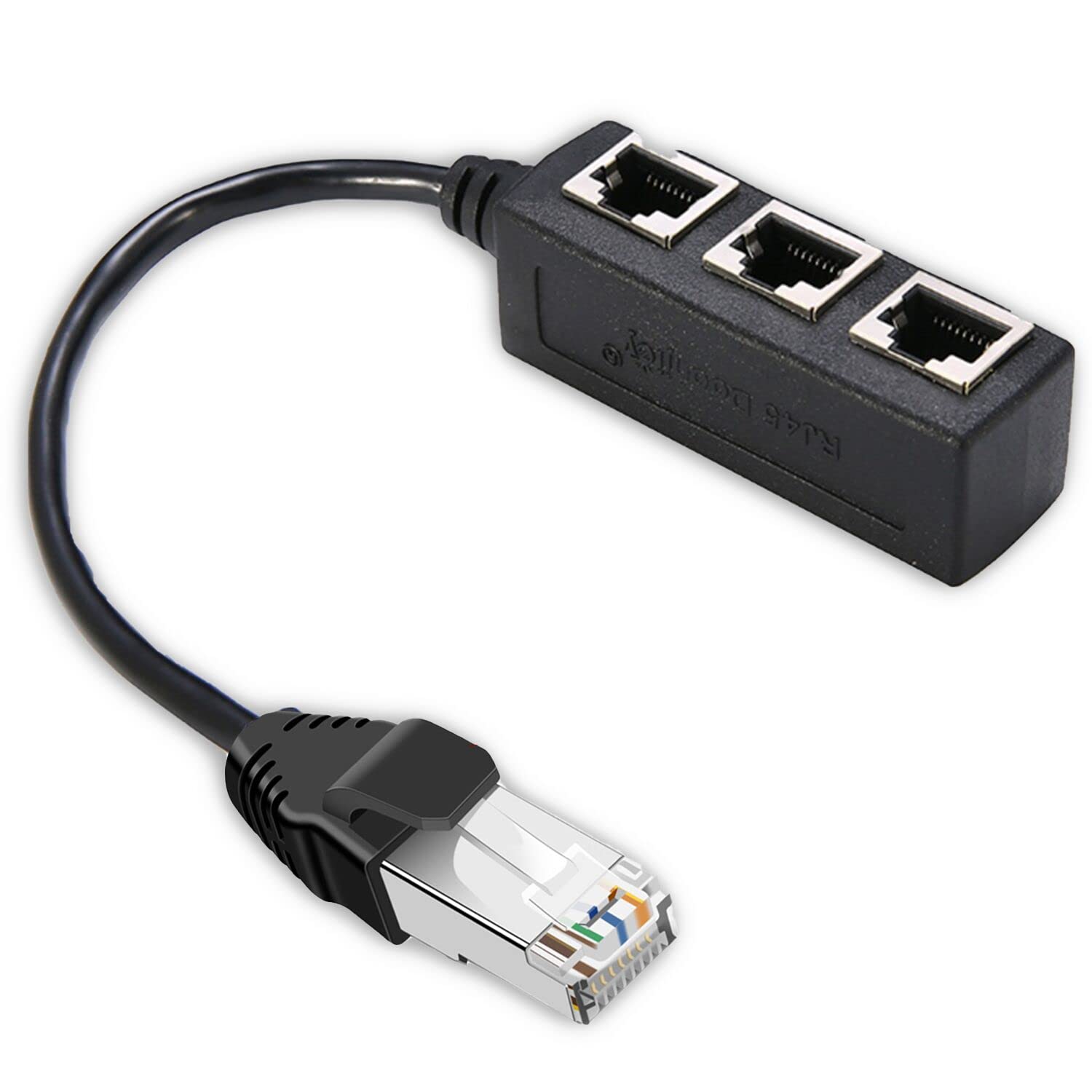Introduction
An Ethernet network is a common and widely used type of local area network (LAN) that allows multiple devices, such as computers, printers, and servers, to be connected and share resources. It utilizes a set of standardized protocols and technologies to facilitate communication and data transfer between devices.
In an Ethernet network, devices are interconnected using network cables, such as Ethernet cables, which transmit data packets between the devices. However, to establish a functional network, the devices need a central point of connection where they can interact and exchange information. This is where network devices come into play.
Network devices are essential components of any Ethernet network as they provide the infrastructure and functionality required to connect devices together and enable communication. These devices not only facilitate data transfer but also manage network traffic, improve network performance, and enhance the overall reliability of the network.
In this article, we will explore the different types of network devices used in an Ethernet network and focus on a specific device that is used to connect computers together in such a network. Understanding these devices and their roles will help you gain a better understanding of how an Ethernet network functions and how devices interact within it.
Ethernet Networks: A Brief Overview
Ethernet networks are a type of local area network (LAN) that provide a reliable and efficient means of connecting multiple devices within a limited geographical area. Originally developed by Xerox Corporation in the 1970s, Ethernet has become the de facto standard for wired LAN connections due to its widespread adoption and compatibility with various operating systems and network equipment.
Ethernet networks utilize a technique called Carrier Sense Multiple Access with Collision Detection (CSMA/CD) to allow devices to share the same network medium and transmit data packets without conflicts. This protocol ensures that only one device transmits at a time, minimizing collisions and maximizing network efficiency.
The primary medium used in Ethernet networks is twisted pair copper cables, commonly known as Ethernet cables, which consist of four twisted pairs of wires. These cables provide reliable and high-speed data transmission, making them ideal for connecting devices in both residential and business environments.
Ethernet networks offer several advantages over other types of network technologies. Firstly, they provide high data transfer rates, ranging from 10 Mbps (megabits per second) for older Ethernet standards to 10 Gbps (gigabits per second) for the latest standards. This allows for quick and seamless transfer of large files, multimedia content, and real-time data.
Secondly, Ethernet networks are highly scalable, allowing additional devices to be easily added to the network without significant disruption. This flexibility makes them suitable for various applications, ranging from small home networks to large enterprise networks.
Another key advantage of Ethernet networks is their versatility in supporting multiple network protocols, such as IP (Internet Protocol), TCP (Transmission Control Protocol), and UDP (User Datagram Protocol), making them suitable for different types of data traffic.
In summary, Ethernet networks are a widely used type of LAN that provide reliable, high-speed, and scalable connectivity for devices within a limited geographical area. Understanding the fundamentals of Ethernet networks is essential for comprehending the role of network devices in establishing and maintaining network connections.
Network Devices in an Ethernet Network
In an Ethernet network, various network devices play crucial roles in facilitating communication, managing network traffic, and ensuring seamless connectivity. These devices serve different functions and are strategically placed within the network to optimize performance and enhance network security.
Here are some common network devices used in an Ethernet network:
- Ethernet Switches: Ethernet switches are the backbone of an Ethernet network. They act as central hubs, connecting multiple devices together and facilitating the exchange of data packets between these devices. Switches create individual data paths, allowing direct communication between devices within the network. They enhance network performance by reducing network congestion and enabling simultaneous data transmission between devices.
- Hubs (Legacy Devices): Hubs are older network devices that served a similar function to switches but lacked the advanced features and capabilities. Unlike switches, hubs do not create separate data paths, instead, they broadcast data to all connected devices. This can lead to network congestion and reduced performance, which is why switches have largely replaced hubs in modern Ethernet networks.
- Routers (For Interconnecting Networks): Routers are devices used to interconnect multiple networks, allowing them to communicate with each other. In an Ethernet network, routers serve as gateways to connect the local network to external networks, such as the internet. Routers analyze IP addresses and determine the most efficient path for data to travel between networks. They also provide network security and perform functions such as Network Address Translation (NAT) and firewall protection.
- Network Bridges (Connecting Different Types of Networks): Network bridges are used to connect different types of networks, such as Ethernet and Wi-Fi networks. Bridges analyze data packets and determine the appropriate destination based on MAC addresses. They enable seamless communication between networks with different physical or logical characteristics, making them essential for creating hybrid network environments.
These are just a few examples of the network devices commonly used in Ethernet networks. Other devices such as network interface cards (NICs), modems, and access points also contribute to the smooth operation and connectivity of the network.
Understanding the roles and functionalities of these network devices is crucial in designing, implementing, and troubleshooting Ethernet networks. Each device plays a specific part in facilitating communication and enabling the transfer of data between devices within the network.
What Device Is Used to Connect Computers Together in an Ethernet Network?
When it comes to connecting computers together in an Ethernet network, the primary device used is an Ethernet switch. Ethernet switches are essential components that provide the necessary infrastructure for creating a network and enabling communication between connected devices.
An Ethernet switch acts as a central hub in an Ethernet network. It has multiple ports that allow computers, servers, printers, and other network devices to connect directly to it using Ethernet cables. Each port on the switch represents a pathway through which data can flow, allowing devices to communicate with one another.
When a computer sends data to another computer within the network, the information is transmitted from the sending computer’s port on the switch to the receiving computer’s port. The switch uses its internal circuitry to efficiently route the data packets to the correct destination. By doing so, Ethernet switches enable direct and efficient communication between connected devices.
One of the most significant advantages of using an Ethernet switch is its ability to create dedicated data paths between devices. Unlike older devices like hubs, which broadcast data to all connected devices, switches establish individual connections between the sender and receiver. This means that each device can communicate with others simultaneously without experiencing network congestion or interference.
Ethernet switches also offer additional features and advanced functionalities that enhance the efficiency and security of the network. For example, managed switches allow network administrators to configure and monitor the network, prioritize specific types of traffic, and implement security measures like VLANs (Virtual Local Area Networks) to segment the network and control access.
In summary, an Ethernet switch is the primary device used to connect computers together in an Ethernet network. It acts as a central hub, providing the necessary infrastructure and pathways for data to flow between devices. With their ability to create dedicated connections and advanced features, Ethernet switches play a vital role in establishing a reliable, efficient, and secure network for computer communication.
Ethernet Switches
Ethernet switches are the cornerstone devices in an Ethernet network. They serve as central hubs, connecting multiple devices together and facilitating the exchange of data packets between these devices.
Here are some key features and functionalities of Ethernet switches:
- Port Connectivity: Ethernet switches come with a varying number of ports, typically ranging from 4 to 48 ports or more. Each port serves as a connection point for a device, such as a computer, server, or printer. The more ports a switch has, the more devices can be connected to the network.
- Switching Speed: Ethernet switches offer different switching speeds, determining how quickly they can transmit data between devices. Switches come in various speed options, such as Fast Ethernet (10/100 Mbps), Gigabit Ethernet (10/100/1000 Mbps), and even 10 Gigabit Ethernet (10 Gbps). The choice of switching speed depends on the network’s requirements and the devices connected to it.
- Managed vs. Unmanaged: Ethernet switches can be classified as either managed or unmanaged. Unmanaged switches are plug-and-play devices that require no configuration. They are suitable for small networks and offer basic functionality. Managed switches, on the other hand, provide advanced features such as VLANs, QoS (Quality of Service), and port mirroring. They offer greater control and customization options for network administrators.
- Virtual LANs (VLANs): VLANs allow network administrators to logically separate a switch into multiple virtual switches. VLANs enhance network security, improve performance, and provide flexibility in managing different types of network traffic. With VLANs, devices connected to the same switch can be logically isolated from one another.
- Power Over Ethernet (PoE): Some Ethernet switches support Power over Ethernet technology, which allows for the simultaneous transmission of power and data over Ethernet cables. PoE switches eliminate the need for separate power supplies for devices such as IP cameras, wireless access points, and VoIP phones, simplifying installation and reducing cable clutter.
- Redundancy and Link Aggregation: Managed switches often support features like link aggregation and spanning tree protocol (STP), which provide redundancy and fault tolerance in the network. Link aggregation allows multiple ports to be combined to increase bandwidth and provide failover, ensuring uninterrupted connectivity.
Ethernet switches are essential for establishing a reliable and efficient Ethernet network. They provide the foundation for connecting devices, managing network traffic, and optimizing performance. Whether it’s for home networks, small businesses, or large enterprises, Ethernet switches offer a range of options to meet specific network requirements.
Hubs (Legacy Devices)
Hubs, although considered legacy devices, were once commonly used in Ethernet networks. They served a similar function to Ethernet switches by facilitating communication between devices, but lacked the advanced features and capabilities of switches.
Here are some important aspects to know about hubs:
- Shared Bandwidth: Unlike switches that create individual data paths, hubs operate on a shared bandwidth model. This means that when a device connected to a hub transmits data, the hub broadcasts that data to all other devices connected to it. As a result, all devices on the hub receive the transmitted data, regardless of whether it is intended for them or not. This can lead to network congestion and reduced network performance.
- Collision Domain: Hubs create a single collision domain, which means that if two or more devices transmit data simultaneously, a collision occurs. When a collision happens, the devices involved must wait for a random period before attempting to retransmit the data. This collision detection and retransmission process can significantly impact network efficiency.
- Limited Ports: Hubs typically have a limited number of ports, often ranging from 4 to 16 ports. This restricts the number of devices that can be connected to the hub. Additionally, the more devices connected to a hub, the greater the potential for network congestion and reduced performance.
- Advantages in Simple Networks: While hubs are outdated for larger networks, they still have some advantages in simple, low-traffic environments. They are easy to set up, require minimal configuration, and are cost-effective compared to switches. Hubs can be suitable for small home networks or temporary setups where basic connectivity is sufficient.
- Transition to Switches: As network demands and data traffic increased, hubs were gradually replaced by Ethernet switches. Switches offered better performance, improved bandwidth allocation, and the ability to create dedicated connections between devices. Today, it is rare to find hubs in modern Ethernet networks.
Although hubs are no longer the preferred choice for Ethernet networks, understanding their history and limitations can provide insights into the advancements made in network technology. Switches have become the standard due to their ability to handle higher data volumes, reduce network collisions, and offer more advanced features for efficient network management.
Routers (For Interconnecting Networks)
Routers play a crucial role in an Ethernet network by enabling communication and data transfer between different networks. They serve as gateways, allowing devices within the local network to connect with external networks, such as the internet.
Here are key aspects to understand about routers:
- Network Interconnection: Routers are designed to interconnect multiple networks and facilitate communication between them. In an Ethernet network, routers receive data packets from one network, analyze their destination IP addresses, and determine the most suitable path for the data to reach its intended destination. This enables devices in one network to communicate with devices in another network.
- IP Address Routing: Each device connected to an Ethernet network has a unique IP address. Routers use these IP addresses to determine the destination of data packets. By examining the IP header of incoming packets, routers make intelligent forwarding decisions to ensure the data reaches the correct destination network.
- Network Address Translation (NAT): Routers often employ NAT, which allows multiple devices within a local network to share a single IP address when accessing the internet. NAT translates the private IP addresses of devices within the local network to a public IP address, enabling seamless communication with external networks. This provides an extra layer of security by hiding the internal network structure from the internet.
- Firewall and Security: Routers commonly include built-in firewall capabilities to protect the network from unauthorized access and potential threats from the internet. Firewalls inspect incoming and outgoing network traffic, enforcing security policies based on predefined rules. They can filter and block certain types of data packets, providing an added level of security to the network.
- Quality of Service (QoS): Routers often feature QoS functionality, allowing network administrators to prioritize certain types of network traffic over others. QoS ensures that critical data, such as voice or video traffic, receives higher priority and is delivered with minimal delay or packet loss, improving overall network performance.
Routers are instrumental in connecting local Ethernet networks to external networks, extending the reach of the network and enabling access to resources beyond the local environment. Whether it is accessing the internet, connecting branch offices, or establishing virtual private networks (VPNs), routers play a vital role in interconnecting networks and ensuring efficient data transfer.
Network Bridges (Connecting Different Types of Networks)
Network bridges are devices used to connect different types of networks, allowing seamless communication between them. They play a crucial role in creating hybrid network environments where different network technologies coexist.
Here are the key aspects to understand about network bridges:
- Connecting Different Network Types: Network bridges serve as intermediaries between networks with different physical or logical characteristics. For example, they can connect an Ethernet network with a Wi-Fi network or link a wired network with a wireless network. By bridging these networks, devices in one network can communicate with devices in the other network.
- MAC Address Filtering: Network bridges inspect the Media Access Control (MAC) addresses of incoming data packets to determine their destination. MAC addresses are unique identifiers assigned to network devices, and bridges use them to forward packets only to the intended recipient. This filtering mechanism ensures that data is delivered only to the appropriate network segment.
- Segmenting Network Traffic: Network bridges can help segment network traffic by creating separate collision domains. By dividing a network into multiple segments using bridges, collisions and congestion can be minimized, improving overall network performance and reliability.
- Spanning Tree Protocol (STP): Network bridges often implement the Spanning Tree Protocol (STP) to prevent loops in bridged networks. Loops occur when multiple bridge connections create redundant paths between network segments, which can lead to packet duplication and network instability. STP analyzes the network’s topology and disables redundant paths, ensuring a loop-free network environment.
- Network Integration: Network bridges are particularly useful when integrating different network technologies. For example, they can connect legacy systems that use older networking standards with modern Ethernet networks, enabling seamless communication between the two. This integration allows businesses to leverage existing infrastructure while gradually migrating to newer technologies.
Network bridges play a vital role in creating unified network environments by connecting networks with different characteristics. They enable efficient communication between diverse network technologies and facilitate the integration of legacy systems with modern networks. With their ability to segment network traffic and avoid network loops, network bridges enhance network performance and provide flexibility in network design and expansion.
Conclusion
In an Ethernet network, various network devices come together to establish connectivity, facilitate communication, and enhance network performance. Ethernet switches play a central role in connecting computers together within the network. They provide dedicated data paths, optimize network traffic, and enable simultaneous communication between devices.
Although hubs were once commonly used, their limited functionality and shared bandwidth made them less efficient compared to switches. Today, switches have become the standard choice due to their advanced features, such as VLANs and link aggregation, which improve network performance and provide better control over network traffic.
Routers play a pivotal role in interconnecting networks, allowing devices within a local Ethernet network to communicate with external networks. They utilize IP addressing and network routing protocols to enable seamless data transmission across networks. Routers also offer features like NAT and firewall protection, enhancing network security and providing reliable internet access.
Network bridges are essential for connecting different types of networks, enabling seamless communication and integration between them. They bridge the gap between technologies, such as Ethernet and Wi-Fi networks, allowing devices to communicate without limitations imposed by different network standards.
Understanding the roles and functionalities of these network devices is crucial in designing, implementing, and managing Ethernet networks. Each device plays a specific part in establishing reliable connectivity and ensuring efficient data transfer within and between networks.
Whether it is Ethernet switches, routers, or network bridges, the selection and deployment of the right network devices depend on the specific requirements of the network and the desired outcomes. By utilizing these devices effectively, organizations can build robust network infrastructures that facilitate seamless communication, optimize performance, and support the evolving needs of modern businesses.







